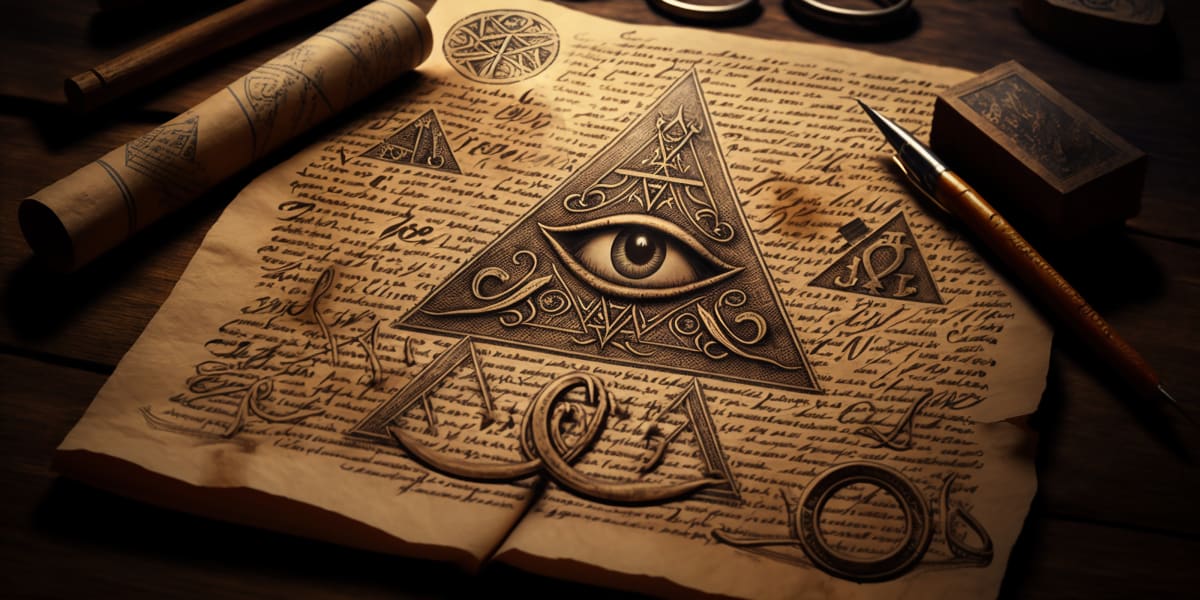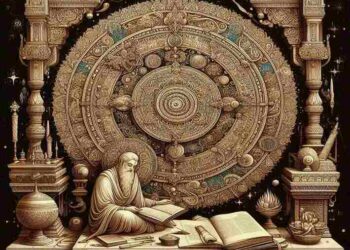Table of Contents
ToggleIntroduction
Exploring Symbolism In Famous English Novels Symbolism is a potent literary element that authors utilize to express deeper meanings in their works that frequently go beyond the obvious plot. Writers can convey complex concepts, topics, and feelings using symbols that readers can relate to both intellectually and emotionally.
Ordinary things, occasions, or individuals are transformed into vehicles for greater truths through symbolism, which frequently enhances the reader’s experience by giving the narrative more depth.
Symbolism has a big influence on how readers understand and interact with well-known English works. Symbolism can uncover secret meanings beyond the literal, whether they are found in the complexities of nature, objects, characters, or even colors. Readers can better explore a novel’s intricacies and recognize the subtleties of an author’s craft when they comprehend symbolism.
1. Symbolism in Classic English Novels
Throughout the history of English literature, authors have used symbolism to explore the human condition, social structures, and philosophical ideas. Some of the most iconic novels in the literary canon rely heavily on symbolism to deliver their themes and messages.
1.1 “The Great Gatsby” by F. Scott Fitzgerald
Although an American novel, The Great Gatsby remains a seminal work in English literature due to its universal themes and the use of rich symbolism. Fitzgerald’s novel, set in the 1920s, explores the American Dream and its inherent contradictions. One of the most iconic symbols in the novel is the green light at the end of Daisy’s dock. The green light represents Gatsby’s unattainable dream and his idealized love for Daisy. It symbolizes hope, longing, and the idea of striving for something that remains out of reach, mirroring the larger American Dream itself.
The eyes of Dr. T.J. Eckleburg, depicted on a billboard overlooking the Valley of Ashes, is another potent symbol in the novel. These eyes, representing an omniscient gaze, allude to the moral decay of society, as well as the loss of spiritual values in the pursuit of materialism.
Read More
1.2 “Moby-Dick” by Herman Melville
One of the most celebrated novels in English literature, Moby-Dick uses symbolism in various ways to explore themes of obsession, fate, and the struggle between man and nature. The most prominent symbol in the novel is the white whale itself, Moby Dick. The whale represents different ideas to different characters— to Captain Ahab, it is an embodiment of evil, a creature to be destroyed. To others, it symbolizes the power of nature, the unknowable forces of the universe, or the fragility of human existence in the face of such forces.
Additionally, the ship, Pequod, serves as a symbol of Ahab’s obsession. It is a microcosm of Ahab’s mind—a vessel that is relentlessly steering toward destruction. The crew, the sea, and the whale all come together to symbolize the futility of trying to control the uncontrollable and the destructive nature of single-minded obsession.
1.3 “Jane Eyre” by Charlotte Brontë
In Jane Eyre, one of the most famous Gothic novels in English literature, symbols are used to explore themes of social class, gender roles, and personal identity. The most significant symbol in the novel is the Red Room, a space that embodies the oppressive forces in Jane’s life. The room represents her childhood trauma, confinement, and the limitations placed on her by her aunt, society, and her own emotions.
Another key symbol in the novel is fire. Fire is associated with passion, freedom, and both destruction and renewal. Throughout Jane’s life, fire represents her internal struggle between her desire for freedom and the constraints of societal expectations.
2. Symbolism in 20th Century English Novels
As English literature evolved through the 20th century, symbolism remained a vital tool for authors to explore modern themes of alienation, existentialism, and the human psyche. The symbols in these novels often reflect the fragmented, chaotic nature of modern life.
2.1 “Lord of the Flies” by William Golding
In Lord of the Flies, Golding explores the breakdown of civilization and the inherent savagery in human nature. The conch shell is one of the most prominent symbols in the novel, representing order, civilization, and authority. Initially, the conch is used to call meetings and maintain a sense of structure among the boys stranded on the island. However, as the boys’ descent into chaos accelerates, the conch’s power wanes, symbolizing the collapse of societal norms.
The beast is another important symbol, representing the primal fears and inner darkness of the boys. Initially believed to be an external force, the beast comes to symbolize the evil within the boys themselves, illustrating Golding’s theme that civilization cannot suppress humanity’s inherent violence and savagery.
2.2 “To the Lighthouse” by Virginia Woolf
Woolf’s modernist classic To the Lighthouse uses symbolism to explore themes of time, memory, and human connection. The lighthouse itself is a central symbol, representing both a physical and metaphorical goal that remains elusive. For Mrs. Ramsay, the lighthouse is a symbol of her desire for order and completion, while for other characters, it represents the unattainable ideal of fulfillment.
The sea surrounding the lighthouse is another symbolic element in the novel, representing the passage of time and the fluidity of human experience. Its constant presence and movement echo the changes in the characters’ lives and the impermanence of their hopes and desires.
2.3 “1984” by George Orwell
In George Orwell’s 1984, symbolism is used to critique totalitarian regimes and explore the nature of oppression and freedom. The most significant symbol in the novel is Big Brother, the face of the Party. Though not a real person, Big Brother symbolizes the totalitarian control and constant surveillance that the Party exerts over every aspect of citizens’ lives. The ubiquitous posters of Big Brother, with the phrase “Big Brother is watching you,” embody the loss of personal privacy and individual autonomy in the dystopian world of Oceania.
Another key symbol is the glass paperweight that Winston purchases. The paperweight represents Winston’s desire to escape the Party’s control and reconnect with a past that is free from oppression. It symbolizes beauty, individuality, and the human spirit, all of which are crushed by the Party’s authoritarianism.
3. The Role of Symbolism in Character Development
In addition to enhancing themes, symbolism plays a crucial role in character development. Characters in famous English novels are often closely associated with specific symbols that reflect their personalities, desires, and transformations throughout the narrative.
3.1 The Green Light in “The Great Gatsby”
Gatsby’s association with the green light is symbolic of his yearning for a future with Daisy, and in a broader sense, his belief in the American Dream. The light represents hope, but it is a hollow, unreachable ideal. Gatsby’s unwavering pursuit of this symbol—despite its inherent elusiveness—reflects his tragic flaw and inability to confront reality.
3.2 The Red Room in “Jane Eyre”
The Red Room in Jane Eyre symbolizes Jane’s confinement within a rigid, patriarchal society. It is a space that represents suffering and isolation, but it also plays a significant role in Jane’s development. Her experiences in the Red Room shape her rebellious spirit and determination to achieve personal freedom later in life.
4. Symbols in English Novels: A Tool for Deeper Meaning
The use of symbolism in literature allows authors to embed deeper meanings and layers within their stories. These symbols can evoke powerful emotions and provoke critical thinking, inviting readers to delve beyond the surface and explore complex themes.
4.1 Nature as a Symbol
Nature often functions as a powerful symbol in English novels. In works like Wuthering Heights by Emily Brontë, the moors themselves are symbolic of the wild, untamed passions of the characters. Similarly, in The Lord of the Flies, the natural setting of the island symbolizes both innocence and the eventual loss of innocence as the boys descend into barbarity.
Read More
4.2 The Role of Animals as Symbols
Animals also serve as symbolic representations of various human traits and qualities. In The Jungle Book by Rudyard Kipling, the animals in the jungle symbolize different human virtues, such as the bear Baloo, who represents loyalty and wisdom, and the panther Bagheera, who embodies grace and strength. Similarly, in Animal Farm by George Orwell, animals become symbols of political ideologies and the consequences of power.

Conclusion
Symbolism is an essential tool in the toolkit of English authors, allowing them to convey complex ideas and emotions in a subtle yet powerful way. From the haunting white whale in Moby-Dick to the elusive green light in The Great Gatsby, symbols offer a pathway to understanding deeper themes and the human experience. As we’ve seen through various examples, symbolism transforms ordinary elements into carriers of meaning that resonate with readers long after the story has ended.
By recognizing and analyzing the symbols in famous English novels, readers can enhance their understanding of the text, uncover deeper meanings, and appreciate the artistry behind the author’s work. Ultimately, symbolism enriches the literary experience, transforming stories into timeless reflections on the world and the complexities of human existence
Read More
FAQ
1 What are the main types of symbolism in literature?
The main types of symbolism in literature include:
- Object symbolism: Everyday objects or items representing abstract ideas (e.g., the green light in The Great Gatsby).
- Character symbolism: Characters that embody larger themes or concepts (e.g., Ahab in Moby-Dick).
- Setting symbolism: Locations or environments that symbolize the broader themes or emotional tones of a story (e.g., the Red Room in Jane Eyre).
- Color symbolism: Colors that represent certain ideas or emotions (e.g., the color white often symbolizes purity or innocence in literature).
2 Why do authors use symbolism?
Authors use symbolism to convey deeper meanings, evoke emotions, and invite readers to look beyond the surface of the narrative. Symbolism adds complexity to a story and encourages readers to engage with the text on a more intellectual and emotional level.
3 How do I identify symbolism in a novel?
To identify symbolism in a novel, pay attention to objects, characters, or events that seem to carry extra weight or meaning beyond their literal significance. Often, symbols will be repeated or emphasized in a way that suggests their importance. Think about how these elements relate to the broader themes of the novel.
4 Can symbolism change the meaning of a novel?
Yes, symbolism can significantly alter the meaning of a novel by offering additional layers of interpretation. By understanding the symbolic elements, readers can uncover hidden meanings and gain a deeper understanding of the text’s themes and messages.
















